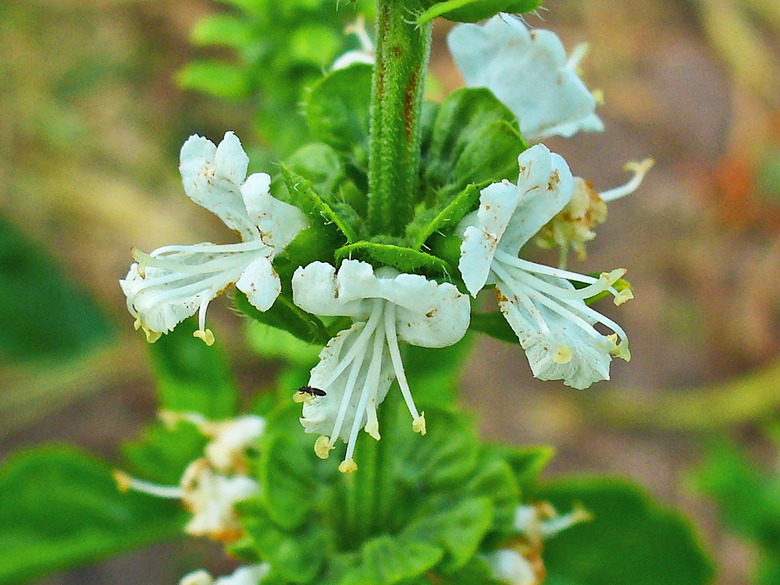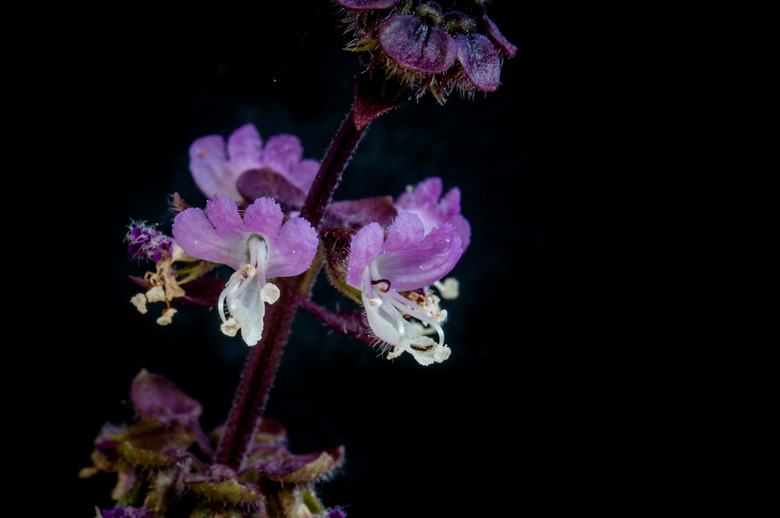How To Dry Basil Flowers
Most people with herb gardens hasten to prune off basil flowers when they appear, because basil blooms mean that the basil (Ocimum spp.) will start putting all its energy into flowering and reproducing rather than continuing to grow those delectable, aromatic leaves.
However, if your goal is to keep the basil flowers and dry them for future use—whether culinary or medicinal—you'll want to harvest the flowers at their peak and dry them in such a way that they can be preserved for as long as possible.
Warning
Once the basil flowers, its leaves become bitter and lose some of their pungent basil scent. If you also want to enjoy basil leaves, harvest them when their leaf growth is still active and before the flowers appear.
Any common variety of basil lends itself to drying, especially sweet basil (Ocimum basilicum) and the sweet basil variety Thai basil (Ocimum basilicum var. thyrsiflora).
Harvesting Basil Flowers for Drying
When harvesting fresh basil flowers to preserve them as dried flowers, wait for a sunny afternoon when the plant and flowers are dry and contain no moisture. Harvest the flower buds during the growing season before the flowers are fully open, because they will continue to mature after cutting.
Air-drying flowers requires enough stem to hang them, so retain at least 4 to 6 inches of stem beneath the flowerheads. Remove the foliage from the stem so the stem is bare.
If you are prepared to dry the flowers immediately, there is no need to put the stems in water first. If you need to wait, however, immediately place the stems in water to keep the flowers from wilting. Basil flowers are delicate and a bit wispy, so they wilt immediately after harvest.
Drying Basil Flowers
While there are multiple methods for drying flowers, air drying is the simplest. This method works for flowers such as basil that naturally have a low moisture content.
Tip
Air drying can take four to six weeks, depending on the moisture in the plant itself as well as the humidity of the room in which the drying takes place.
Gather the basil flower stems into bunches of perhaps 10 to 20 stems, and tie them together with twine or use elastic bands or twist ties. Hang the bunches upside down on a clothesline, drying rack or nails in a dry location. An unheated garage is fine, although outdoors works best if the weather is warm and dry.
Storing Dried Basil Flowers
After the basil flowers are fully dry, store them in an air-tight container such as a glass jar or plastic container with a tight-fitting lid.
How to Use Dried Basil Flowers
Basil flowers, once dried, can be used in a multitude of ways.
Culinary Uses for Basil Plant Flowers
A popular way to use dried basil flowers is to infuse vinegar with basil flavor to make basil flower vinegar, which lends a somewhat peppery flavor to the vinegar and is an effective addition to salad dressings or marinades.
You can also sprinkle dried basil flowers as a garnish on salads or rice or make herbal basil tea.
Medicinal Uses for Basil Plant Flowers
Some varieties of basil have properties that are well-suited for medicinal use, in particular, holy basil (Ocimum tenuiflorum), also called tulsi. Holy basil is widely used in Hinduism, where the name "tulsi" originated as a manifestation of the goddess Lakshmi (Tulasi).
Many people use holy basil to address problems associated with bronchitis, indigestion, stomach ulcers, insect bites and other maladies.

